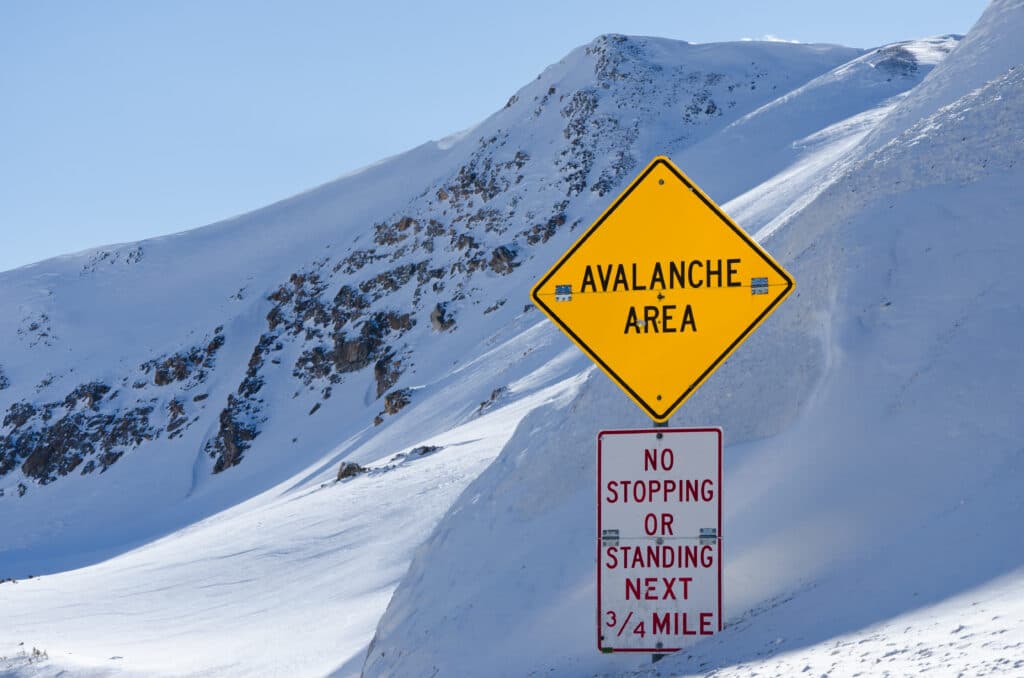Speeding Sediment: The world’s longest documented underwater avalanche traveled for 1100 kilometers (683 miles) from the Congo Canyon to deep in the Atlantic Ocean. The Congo Canyon, which starts in West Africa’s Congo River, is a deep underwater valley - one of the largest and deepest submarine canyons in the world. - phys.org
You read it first in The Factory in Guide magazine.
Have you ever seen an avalanche? It can be kind of frightening even if you are at a safe distance. The only kind I‘ve seen are in pictures and hopefully that is all I will ever see!
There are different kinds of avalanches. For instance, a snow avalanche happens when huge amounts of snow and ice suddenly start sliding down from the mountain tops taking out trees, rocks, or anything in its path until it comes to a stop, burying everything under several feet of snow debris. Sometimes loud, sharp noises can echo off the mountain walls triggering the unstable layers of the snow pack to begin an avalanche. A large, fully developed avalanche can weigh as much as a million tons. It can travel faster than 320 kilometers (200 miles) per hour!
Then there are land avalanches (typically called mudslides or landslides) where rain-soaked earth gives way, causing dirt, mud, rocks and trees to fall and sometimes houses to break apart and fall down mountains or cliffs and slip into valleys or rivers. These happen when we have been inundated with rain in a short amount of time, or it has rained for so many days that the dirt cannot hold the water anymore, causing mud and earth to give way.
But did you know these can also happen underwater?! Scientists have tried to record seismic activity (volcanic activity) deep in the ocean. And there is one place in West Africa’s Congo River where they were able to track the longest traveled avalanche yet!
Imagine a big rock slide traveling for over 680 miles (1100 kilometers) before coming to a stop! Just as a comparison, I used to travel from Collegedale, TN to Orlando, FL and that was about 500 miles. This avalanche went even farther than that, 683 miles - it was massive!

In January of 2020, scientists were able to collect instruments that they had placed back in October of the previous year to review data. They had placed the instruments in the Congo Canyon which starts in West Africa’s Congo River. This is a deep underwater valley - one of the largest and deepest submarine canyons in the world.
When this avalanche happened between January 14-16, 2020, eleven of these sensors broke free from their moorings and traveled at up to 8 meters (about 26 feet) a second. The turbidity current traveled more than 1,100 km from the Congo River estuary to deep-sea, making it the longest avalanche of sediment ever measured on Earth. In two days, the flow reached an ocean depth of more than 4,500 m (over 14,750 ft).
The avalanche of sediment accelerated, increasing in speed from 5.2 meters (about 17 feet) per second in the upper reaches of the Congo Canyon to 8 meters (over 26 feet) per second as it reached the end of the channel, some 1,100 km from the coastline.
Unfortunately, ever since sin has entered this world, destruction seems pretty common. And we can see the powerful force of nature and natural disasters at times. We know that even the earth groans under the weight of sin. Romans 8:22-23 says, “For we know that the whole creation groans and labors with birth pangs together until now. Not only that….we ourselves groan…eagerly waiting for the redemption of our body.”
—Carol Lyons, Assistant
Discovery Mountain
Scripture taken from the New King James Version, Copyright 1982 by Thomas Nelson. Used by permission. All rights reserved.
Learn More About This Fact
For more interesting facts, click on the buttons below!

